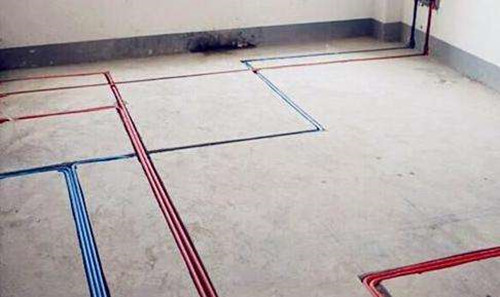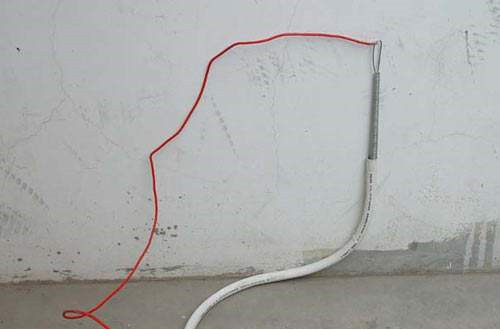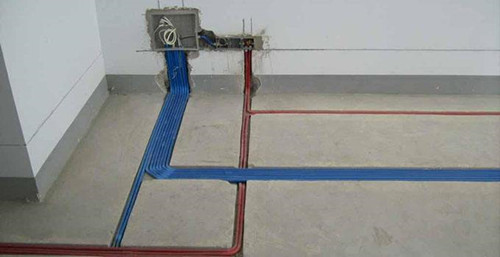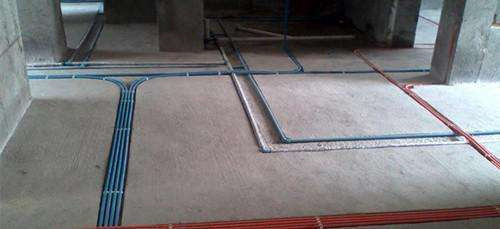Every year, tragedies due to electric shocks occur. This kind of tragedy is often caused by many people's ignorance of electric wires and inadequate safety measures. Therefore, electricity is a double-edged sword, and it must be regulated in use to ensure the safety of users. So how do you wire home wires ? What are the precautions for wire wiring? Let's take a look with the editor.
1. How to wire household wires
1. Regardless of whether the floor is a composite floor or a solid wood floor during wiring construction, the wire should be laid on the corner behind the skirting board, and secondly, there should be no dead corner in the middle of the wire tube when inserted through the doorway or wall. Therefore, it is best to use wire leads in the pipe, and you can pass the wire in before the floorboard is installed and the skirting board is not installed.

2. The wire tube used for wiring is just a plastic coiled tube. Such a tube generally has no joints in the middle, so it will not get stuck when threading. If there is a joint in the middle, it must be connected in the same direction with a pipe of the same size and size. In addition, during construction, the line pipe does not need to be hurried to pass through the wire, but can be inserted into the iron wire first, and the corresponding wire is connected when the electrical is to be installed.

2. Analysis of matters needing attention in wire wiring
1. Fully understand the capacity of home appliances: Before wiring household wires, we must first consider the total amount of electricity used at home and all electrical equipment to determine the amount of wires and the size of its ports. Such high-power appliances as air conditioners and ovens must use a separate line.

2. The kitchen and bathroom are powered by electricity: the wiring of the bathroom and kitchen must not be on the ground, and should be routed to the roof or along the wall. Because the kitchen and bathroom are places with a lot of water, if the floor is grooved, it will affect its waterproof performance, and it is also very troublesome to overhaul.
3. The direction of the line is horizontal and vertical: the construction standard of the wiring is horizontal and vertical, but some construction personnel pull the inclined line for the convenience of construction. Although this is more time-saving and labor-saving, it is very unfavorable for subsequent maintenance. In addition, some owners like to hang some murals at home, and the murals need to be chiseled during the construction, so it is easy to chisel the diagonal line.

4. Wires should be covered with insulated tubes: when the wires are buried in the wall, they cannot be buried directly. Be sure to cover the wires with insulated tubes before they can be buried. Secondly, the wires in the bushing must not be spliced ​​or twisted. Generally speaking, no more than 3 rotors can be used when embedding the wire.
Editor's summary: How to wire home wiring and related knowledge of wire wiring considerations, the editor has introduced here. Electricity is a double-edged sword. Although it can illuminate our world, we must be very careful when using it to avoid accidents.
What, the decoration still uses his own money? ! The Qi family is decorated in installments, with an ultra-low annual interest rate of 3.55% and a maximum loan of 1 million. Apply now to enjoy the discount
If you are interested in brand cooperation, content cooperation, and advertising of this website, please send an email to :.
Corn Husk is a by-product of corn deep processing enterprises. The corn granules are immersed and then enter the starch production process, and then processed by washing, squeezing, drying and the like. Its main components are fiber, starch, protein and the like. The Corn Skin separated by soaking and crushing corn.
Corn Skin has the protein 10%-12% ,12%-14% protein.
Corn Husk Corn Fiber 10%-12%
Corn Husk Corn Fiber 10%-12%,Corn Bran,Corn Fiber,Corn Skin,Corn Husk
MIDI FEED BIOTECH LIMITED , https://www.midifeed.com
